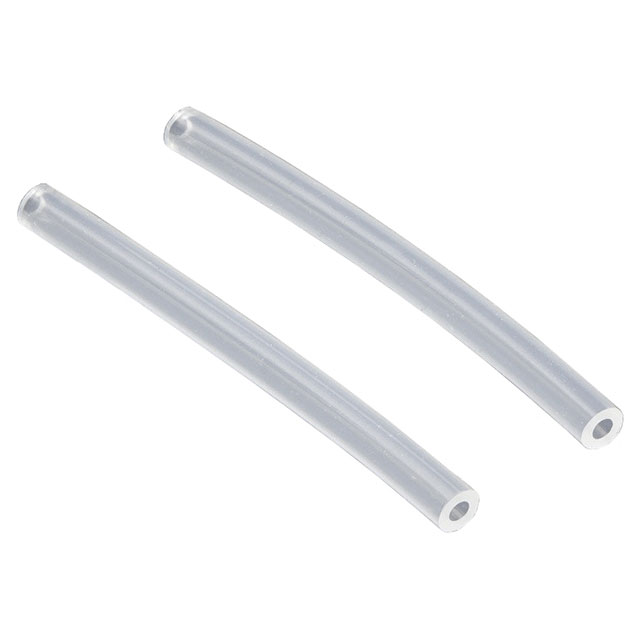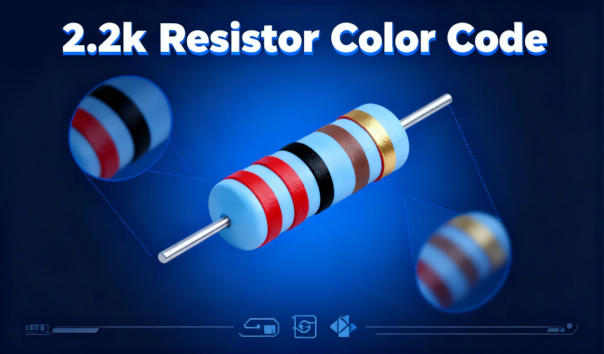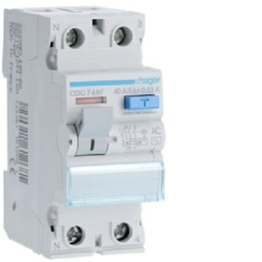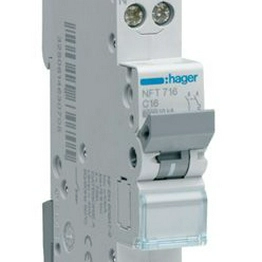How to Use Solder Wick
In the busy workshop of an electronics technician, an array of tangled wires and components are prepared for you. As you begin to repair a digital circuit board plagued by excess solder, you remember the trusty solder wick. With tension in the air and the anticipation of transforming chaos into functionality, you reach for the solder wick. The challenge ahead is clear: mastering the simple yet effective methods of solder removal and restore precision to the intricate world of electronics. Welcome to our column: How to Use Solder Wick.
Introduction to Solder Wick
Solder wick, commonly referred to as desoldering wick or solder braid, is an essential instrument in the electronics field. Consisting of a slender, intertwined copper wire covered with flux, this instrument is designed for the accurate extraction of solder from joints, connections, and components on circuit boards.
When exposed to heat above a solder joint, the solder wick activates. Its flux engages, pulling the molten solder into the braid via capillary action. This procedure enables technicians and enthusiasts to accurately and effectively fix or modify electronic devices.Whether fixing a solder bridge, swapping out a component, or tidying up extra solder, the wick guarantees a neat and polished result. If you want an easy method to organize your soldering tools, think about purchasing durable tool bags. These can assist you in maintaining your tools in an organized and easily reachable manner. Fundamentally, the solder wick is a crucial companion in soldering activities, ensuring precision and safety with every application.

Characteristics of Solder Wick
It is important to know the characteristics of the electronic component before learning how to use:
Material Composition
Solder wick is made from braided copper wire, known for its excellent thermal conductivity. This ensures that heat is efficiently transferred from the hot soldering iron to the solder joint, facilitating a faster and more effective desoldering process.
Capillary Action
The fine, woven design of the solder wick enhances capillary action, allowing it to draw solder up into the braid when heated. This enables the wick to absorb solder quickly and effectively, making it easier to clear joint areas without damaging surrounding components.
Flux Coating
Many solder wicks come pre-coated with flux, which aids in the desoldering process. The flux reduces the surface tension between the solder and the wick, thereby improving the absorption rate. This characteristic helps to minimize the amount of heat transfer required to melt the solder, thus reducing the risk of thermal stress on sensitive components.
Variety of Sizes
Solder wicks are available in various widths and lengths, allowing users to select the appropriate size for specific applications. This versatility makes it easier to manage different soldering tasks, from intricate surface mount devices to larger through-hole connections.
Cost-Effectiveness
Solder wick is relatively inexpensive compared to other desoldering methods such as vacuum pumps or desoldering stations. This affordability makes it accessible for hobbyists, technicians, and professionals alike.
Ease of Use
Using solder wick is straightforward. By placing the braid over the solder joint and applying a soldering iron on top, the solder is absorbed into the wick. This simplicity makes it an ideal choice for both beginners and experienced users.
Non-Reusable
One notable characteristic of solder wick is that it is non-reusable. Once it has absorbed solder, it must be cut off and replaced with a fresh segment. This feature underscores the importance of having multiple lengths available for extensive repair work.
Heat Sensitivity
While solder wick is effective, it requires careful handling. The braid can become very hot during use, necessitating the use of tools such as tweezers or pliers to avoid burns and ensure safe operation.
Limited Effectiveness on Certain Joints
Solder wick is generally more effective on surface mount components or broader solder joints. However, it can be more challenging to use on pinholes or densely packed areas, which may require additional care and technique.
Benefits of Using Solder Wick
Here are some of the key benefits of using solder wick when removing solder from circuit boards:
Precision
The solder wick provides unmatched accuracy, ensuring that only the required amount of solder is taken out, keeping components and connections undisturbed.
Safety
The solder wick, with its gentle but efficient desoldering abilities, reduces the likelihood of harming digital circuit boards and parts.
Efficiency
The design of the solder wick, along with its flux coating, guarantees quick and complete absorption of molten solder, accelerating the desoldering procedure.
Adaptability
Ideal for both beginners and experienced experts, the solder wick addresses various soldering requirements, from basic fixes to complex rework tasks.
Neat Outcome
In addition to its main purpose, the solder wick helps attain a tidy soldering outcome, improving both the appearance and effectiveness of the project.
Economical
Considering its efficiency and the possible savings from not having to replace components, the solder wick is a budget-friendly tool over time.
Compact and Portable
The stylish design of the solder wick allows for easy storage and transport, ensuring you are always prepared with this essential tool when encountering soldering challenges.
Different Types of Solder Wick
When it comes to desoldering electronics, solder wicks are invaluable tools that help you remove excess solder from printed circuit boards (PCBs) and electronic components. There are a wide variety of solder wicks: pre-fluxed and fluxless. Let's take a closer look at each type and their applications.
Categories of Solder Wick According to Width
Solder wick is available in multiple widths to accommodate various uses. The breadth of the braid influences the amount of solder it can soak up and the accuracy of the desoldering procedure.
Narrow Width (1.0mm to 1.5mm)
Ideal for: Tiny, sensitive parts such as SMDs (Surface-Mount Devices) or micro-circuits.
Benefits: Offers great accuracy and prevents harm to adjacent parts.
Scenario Illustration: Extracting solder from fine-pitch integrated circuits or tiny PCB pads.
Medium Width (2.0mm to 2.5mm)
Ideal for: Versatile desoldering tasks.
Benefits: Harmonizes accuracy and solder uptake.
Use Case Illustration: Eliminating solder from typical through-hole components.
Wide Width (3.0mm to 5.0mm)
Ideal for: Significant solder connections or regions with substantial solder buildup.
Benefits: Eliminates solder from components swiftly and effectively.
Example of Use Case: Removing large pads or connectors by desoldering.
Different Desoldering Wick Flux Types
Among various different types of fluxes, the following three are the most common types.
Rosin Flux
Features: Flux based on natural resin, providing outstanding solder uptake.
Ideal for: General electronics tasks.
Benefits: Great effectiveness with little leftover.
Drawbacks: Leftover material may be destructive and needs cleaning.
No-clean Flux
Features: Man-made flux that generates little residue.
Ideal for: Scenarios where cleaning is impractical.
Benefits: Non-corrosive and removes the requirement for after-cleaning.
Drawbacks: Somewhat inferior in effectiveness to rosin flux.
Water-soluble Flux
Features: Flux that is washable with water.
Ideal for: Applications requiring high reliability where all residue needs to be thoroughly eliminated.
Benefits: Simple to clean and guarantees superior soldering quality.
Cons: Needs to be cleaned post-use.
Types of Specialty Solder Wicks
There are specialized types of solder wick created to tackle distinct challenges for specific applications.
Anti-Static Solder Wick
Objective: Guards against electrostatic discharge (ESD) that may harm delicate active ingredients.
Ideal for: Handling devices sensitive to static, such as microprocessors or memory chips.
Lead-Free Solder Wick
Purpose: Intended for use with lead-free solder that necessitates elevated temperatures.
Ideal for: Adhering to RoHS (Restriction of Hazardous Substances) regulations.
High-Capacity Solder Wick
Objective: Crafted to swiftly soak up increased quantities of solder.
Ideal for: Fixing high-volume solder connections, like those found in power electronics.
How to Choose the Right Solder Wick
Before knowing how to use solder wick, learning how to choose the suitable solder wick is also important. Here are some tips that you can follow:
Type of Solder Wick
The first thing to consider is the type of solder wick you need. As we have mentioned previously, there are mainly two types: pre-fluxed and fluxless. For most general solder removal tasks, pre-fluxed wicks are the go-to option due to their efficiency and ease of use. However, if you're working in situations where residue must be minimized, fluxless wicks can be a better choice.
Width of the Wick
Solder wick comes in various widths, typically from 0.5 mm to 3.5 mm. The width you choose will depend on the size of the solder joint you need to remove. A wider wick can absorb more solder at once, making it ideal for larger joints. Conversely, a narrower wick is beneficial for delicate or intricate work, such as soldering small components on a PCB.
Quality of the Material
Not all solder wicks are created equal. It's crucial to choose a high-quality wick that ensures effective solder absorption. Look for products made from copper, as copper is excellent at pulling heat and solder. Reading reviews and seeking recommendations from experienced technicians can save you time and frustration when selecting quality materials.
Heat Resistance
If you're frequently working with high-temperature soldering tasks, make sure to select a solder wick that can withstand the necessary heat without degrading. Fluxless options may serve you better for lead-free solder tasks due to their resistance to higher temperatures, while pre-fluxed wicks generally handle standard jobs effectively.
Flux Compatibility
If you want to choose a fluxless wick, consider the type of solder you're using. For more intricate jobs where a clean surface is essential, you might prefer a solder wick that is compatible with your specific soldering type—lead-based or lead-free. Understanding the flux chemistry can help you choose wisely, as some solders work better with certain fluxes.
Practical Applications of Solder Wick in Electronics
After choosing the suitable one, it's time for you to use the solder wick. Here we will introduce some practical applications.
Removing Solder Buildup
A common application for solder wick is to remove unwanted solder from PCB connections. Whether you’ve unintentionally used excess solder or need to repair a cold joint, the wick effectively absorbs that excess solder to guarantee a tidy connection. Positioning the wick over the impacted region and using a soldering iron to apply heat causes the solder to be absorbed into the wick, resulting in a cleaner, more polished appearance.
Repairing Mistaken Connections
If you've accidentally soldered a component in the incorrect location, solder wick can help. Just warm the joint with your soldering iron while positioning the wick above. When the glob of solder liquefies, it gets soaked up by the wick, enabling you to effortlessly remove the component for realignment. This is especially crucial in boards with high population density where accuracy is essential.
Cleaning Solder Joints
It's fairly usual for solder joints to gather dirt and flux residue as time passes, impacting their efficiency. Solder wick may be utilized for cleaning these connections. By meticulously using the wick with heat, you can efficiently eliminate leftover solder bridges and flux, providing your connections a clean slate and enhancing their durability.
Working with Delicate Components
For complex soldering tasks, particularly with tiny components such as surface mount devices (SMDs), solder wick is revolutionary. Its capacity to take in minor amounts of solder helps prevent harm to these fragile components. The accuracy of a thinner solder wick enables precise handling, guaranteeing that you won’t unintentionally lift or harm adjacent components while desoldering.
Enhancing Rework Efficiency
In business environments, time equates to money. Solder wick greatly enhances the efficiency of the rework process. When paired with a hot air rework station, technicians can effectively eliminate and substitute components without the trouble of scraping or excessive solder removal. This improves workflow and reduces the chance of accidental damage while you repair environments.
Practical Applications of Solder Wick in Electronics
The mixture of various fluxes and braid widths enables desoldering wick to be used in many applications.
Pin Wrap Wire
Desolder the pins to facilitate easy removal. Eliminates solder accumulation. Removes possible occasional issues.
Lugs/Supports
Wicks solder thoroughly, preventing any solder splash or drip. Leaves terminal energized and prepared for resoldering.
Elements
Effortlessly eliminates solder from parts with direct or bent leads. Least heat necessary. No harm to the board or parts.
SMT Pads
Rapidly and securely removes entire rows of surface mount pads. Application-specific dimensions remove individual fine-pitch SMT pads.
BGA Contacts
Effectively eliminates solder from BGA pads and chips in three to four cycles. Thoroughly eliminates all leftover solder and aids in chip relocation.
Solder Connections
Thoroughly eliminates solder bridges. Removes possible short circuits. No harm to boards or electronic components.
Neat Manuscript
Discreetly modifies engraved text. Enhances visual appeal. Removes secondary identification. Simple to operate.
Surplus Solder
Eradicates and takes away blobs, along with shorts and icicles. Results in a smooth circuit. Cleans areas that may cause issues.
Finger Connectors
Cleans finger connectors and surface-mounted pads.
Prepare Your Workspace for Soldering
Before starting your soldering project, it’s essential to do proper preparation. A clean, organized area will greatly enhance your productivity and ensure that you can work safely. Here are the key steps to consider:
- Gather Your Tools: Ensure you have all necessary tools within reach. This includes solder wick, soldering iron, solder, flux, wire cutters, and a clean work surface.
- Lighting Matters: Good visibility is crucial. Ensure your workspace is well-lit so that you can accurately position the solder wick and see what you are doing. A magnifying lamp can be beneficial, especially for intricate work.
- Ventilation is Key: Soldering can produce fumes that are harmful if inhaled. Work in a well-ventilated area or use a fume extractor to keep the air clear.
- Practice Safety: Always wear safety glasses to protect your eyes from splashes of molten solder and other debris. Keep a fire extinguisher nearby in case of emergencies, as soldering can pose a fire risk if not done carefully.
Using Solder Wick: Step-by-Step Guide
Now that your workspace is ready, let’s delve into the practical steps for using solder wick.
Step 1: Select the Right Wick
Solder wick comes in various widths. Choose a width that is appropriate for the project. For large pads or joints, a wider wick provides a better absorption area. Conversely, for finer work, such as SMDs, opt for a narrower width.
Step 2: Heat Your Soldering Iron
Plug in your soldering iron and allow it to reach the desired temperature. For most soldering applications, a temperature between 350°C (662°F) and 400°C (752°F) is ideal.
Step 3: Position the Wick
Place the solder wick over the area you wish to desolder. Ensure it completely covers the solder mess, allowing ample space for the solder to flow into the wick.
Step 4: Apply Heat
With the wick positioned, place the tip of the soldering iron on top of the wick. The heat will cause the solder to melt. As it liquefies, it will be drawn into the solder wick, which captures the excess solder efficiently.
Step 5: Remove the Wick and Iron
Once you notice that the solder has been absorbed, carefully remove the soldering iron and allow the wick to cool briefly. Gently lift the wick away—the absorbed solder should come off with it.
Step 6: Inspect and Clean
After removing the wick, examine the area for any residue. You can use a small brush or isopropyl alcohol on a cloth to clean the surface and ensure everything is tidy for future connections.
Common Mistakes and How to Avoid Them
While using solder wick is a straightforward task, mistakes can happen. Here are some common pitfalls and how to steer clear of them:
- Using Too Much Heat: Overheating can damage components. Control the heat of your soldering iron carefully, and avoid prolonged contact with your wick and the targeted joint.
- Not Using Enough Wick: Ensure you have enough wick to absorb the required solder. Using too little may result in unsuccessful attempts at desoldering.
- Trying to Remove Solder Too Quickly: Give the solder enough time to reach melting point and be absorbed fully before removing the iron. Patience leads to better results.
Gather Necessary Tools and Materials
Before starting the process of using solder wick, it’s essential to gather the right tools and materials. Here’s what you’ll need:
- Fresh Solder Wick: Available in various widths, chosen according to your project requirements.
- Soldering Iron: A reliable soldering iron with adjustable temperature settings is crucial.
- Desoldering Braid: This term is often used interchangeably with solder wick; it's the same product.
- Isopropyl Alcohol and Brush: To clean up any residual flux or grime post-desorbtion.
- Tweezers: Helpful for positioning the wick precisely over the solder joint.
Determine the Correct Temperature
For the actual desoldering, you need to determine the correct temperature for your soldering iron, follow these steps:
- Identify the Type of Solder Used:
Check if the electronic device or PCB you are working on uses lead-free solder or lead solder. This will influence the temperature setting.
- Refer to Temperature Ranges:
For lead-free solder, set your soldering iron tip temperature between 570 °F (300 °C) and 660 °F (350 °C). For lead solder, use a lower temperature range of 520 °F (270 °C) to 570 °F (300 °C).
- Adjust the Soldering Iron:
Based on the type of solder identified, adjust your soldering iron to the appropriate temperature within the specified range.
- Allow Sufficient Heating Time:
Once you set the temperature, give the soldering iron enough time to reach the desired temperature before proceeding with desoldering.
Ensure Your Soldering Iron Tip is Properly Tinned
A properly cared-for soldering iron tip is vital for efficient desoldering using solder wick. Tinning, the process of applying solder to the iron tip, improves thermal conductivity and aids in preventing oxidation. Here’s how to make sure your soldering iron tip is adequately tinned:
Clean the Tip: Start by wiping the tip with a moist sponge or brass sponge. This eliminates any outdated solder, oxidation, or debris that could block heat transfer.
Warm up the Iron: Activate your soldering iron and let it reach the specified temperature for the type of solder you are using. An essential factor for successful tinning is a heated iron.
Use Solder: After heating, apply a small quantity of solder to the tip. The solder needs to liquefy and create a glossy layer. A well-tinned tip should look shiny and smooth, free from any solder clumps.
Remove Extra Solder: If the tip has an excess of solder, carefully wipe it on the sponge to create a smooth layer without any drips.
Routine Upkeep: Don't forget to re-tin your soldering iron tip on a regular basis, particularly after extended use or when changing between various solder types. Adequate upkeep improves functionality and extends the lifespan of your soldering iron.
Apply Flux to Enhance Solder Wicking
Using flux is an essential process when applying solder wick for desoldering tasks. Flux enhances the flow of solder and aids the absorption process by minimizing oxidation on the soldered joint. Here’s the correct way to use flux for the best outcomes:
Pick the Appropriate Flux: Choose an appropriate flux for your task. Rosin-based flux is frequently utilized for electronic parts, whereas water-soluble flux is best suited for more sensitive applications.
Prepare the Area: Prior to applying flux, make sure the region surrounding the solder joint is clean. Utilize isopropyl alcohol and a lint-free cloth to eliminate any dirt or remnants that might obstruct the wicking process.
Use the Flux: With a tiny brush or applicator, spread a light layer of flux right onto the solder joint you intend to desolder. Take care not to use too much; a small amount is quite effective.
Allow it to Absorb: Give the flux some time to seep into the solder. This will improve the wicking effect when you apply the solder.wick.
Add Heat to the Wick with a Soldering Iron
After preparing the solder joint with flux, it's time to use the solder wick properly. Start by positioning the solder wick directly on top of the joint you intend to desolder. Make sure the wick covers the full surface of the solder to enhance absorption.
Next, position your heated soldering iron on the solder wick. The heat will move through the wick and into the solder underneath, making it melt. Usually, the solder melts within a few seconds. As the solder liquefies, it will be drawn into the copper braid of the wick via capillary action.
Hold the soldering iron steady for a moment until you see the solder getting drawn into the wick. As soon as you notice that the solder has penetrated the wick—usually shown by a change in color—gently raise both the iron and the wick at the same time.
At last, let the wick cool for a moment before removing it. If there is any leftover solder, repeat the procedure until the joint is clear of extra solder. Employing solder wick not only cleans the surface but also protects the components, rendering it a vital method for every soldering enthusiast.
Remove the Wick and Component After Soldering
Once you have removed the solder with the wick, it’s time to clean up and examine your work. Gently remove the solder wick from the joint while it is still warm to prevent the need to apply heat again. You may softly wiggle it if necessary, but take care not to disrupt the nearby components.
Once the wick is removed, take a moment to inspect both the solder joint and the wick. The wick ought to have taken in the solder, forming a darker area where the solder gathered. This is a positive sign that your wicking was effective!
Then, ensure the region is completely free of solder before moving forward. If any solder is left, you can redo the wicking process until the joint is spotless.
When you feel content with the result, it’s wise to clean the space again using isopropyl alcohol and a lint-free cloth to remove any leftover flux. This will aid in securing a strong connection when you re-solder new components into position. With a tidy workspace and correctly desoldered connections, you are now prepared to proceed with your project, whether it involves repairing, altering, or creating something entirely new.
How to Store Solder Wick to Ensure Longevity
Proper storage of solder wick is crucial for preserving its efficiency and avoiding it from becoming ineffective. Here are several useful suggestions to make sure your solder wick remains in excellent shape for your upcoming project.
Keep It Dry
Solder wick consists of woven copper wire, which may corrode when in contact with moisture. To avoid this, always keep your solder wick in a dry place. Think about utilizing a small, sealed plastic bag or a covered container. This protects it from moisture and also assists in avoiding any unintended tangling.
Avoid Direct Heat
Because solder wick is utilized for heat-sensitive applications, store it away from direct heat sources. An overheated soldering iron, inadequate insulation in the workspace, or direct sunlight can harm the wick, reducing its effectiveness. Keep it in a cool, dry place to preserve its quality over long durations.
Wrap It Neatly
To prevent tangles and twists, ensure that you coil your solder wick neatly after each use. This will not only assist in avoiding damage but also ensure a hassle-free experience when you're prepared to use it again. If feasible, utilize a spool or a specific holder made for solder wick to preserve its form.
Check for Damage Periodically
Before using solder wick that has been kept for some time, perform a brief examination. Check for any indications of wear, fading, or rust. If you see any problems, it’s wiser to change the wick instead of jeopardizing your soldering project with faulty materials.
Label for Quick Access
If you possess several rolls of solder wick (potentially with varying widths), think about tagging each one. In this manner, you can swiftly pick the appropriate wick for your project without needing to sort through various spools. Effective organization reduces time and irritation, enhancing the smoothness of your soldering experience.
How to Use Desoldering Wick
Desoldering wick greatly shortens rework/repair duration and lowers the likelihood of heat damage to the board. Its precisely woven geometric design enables optimal capillary action and solder capacity. Desoldering proper braid enhances heat conduction through the braid and into the solder joint, leading to quicker wicking action than any rival brand. A minimal amount of flux residue on the board accelerates the cleaning process or completely removes the need for it.
Desoldering with wick is fast and simple, needing a standard soldering iron and usually a screwdriver, chisel, bevel, or knife soldering tip.
Position the braid over the excess solder, ideally on the largest solder accumulation to ensure maximum contact between the braid and the solder's surface area.
Then, position your iron tip above the wick at a 45-degree angle and let the heat move to the pad. Liquid solder will soak into the braid.
Adjust the solder tip and braid as necessary to eliminate all the solder in one go. Be cautious not to pull the braid across the pads, as they may get scratched.
When the braid is saturated with solder, you need to cut the used section and switch to a new braid to absorb additional solder. Take away the iron and braid at the same time to prevent the wire from sticking to the board.
Alternatives to Solder Wick for Desoldering Tasks
Although solder wick is a highly effective tool for desoldering, it is not the sole choice you have. Based on the details of your project or individual preference, you can find alternative methods that are equally effective, or potentially better aligned with your requirements.
Desoldering Pumps
Desoldering pumps, often referred to as solder suckers, are a favored substitute for solder wick. These basic tools utilize suction to extract molten solder from circuit boards. To effectively utilize a desoldering pump, begin by applying heat to the solder joint with a soldering iron until it liquefies. Swiftly place the pump's nozzle above the liquid solder and activate the suction feature. The solder must be pulled into the pump, resulting in a clean pad on your PCB. This technique is especially useful for bigger solder connections or when you need to eliminate solder rapidly.
Heat Gun
If you're dealing with surface-mounted devices (SMDs) or bigger solder joints, a heat gun could be the perfect option. A heat gun spreads hot air across a wider space, enabling several solder joints to melt at the same time. The benefit is that you can remove multiple components simultaneously, which can save a considerable amount of time. After the solder has liquefied, you can employ tweezers or a desoldering pump to remove the component. Nevertheless, exercise caution when utilizing a heat gun, since too much heat may harm delicate parts or the circuit board.
Soldering Iron with a Fine Tip
For people who favor a more tactile technique, a soldering iron featuring a fine tip can be utilized directly to eliminate solder. By gently and slowly using the tip of the iron to adjust the solder, you can frequently loosen connections without needing extra flux. This technique demands a steady hand and significant control, which makes it perfect for small, accurate tasks. Simply ensure you have an appropriate surface ready for cleaning off excess solder from the iron tip to prevent transferring solder onto other sections of your project.
Flux and Solder Removers
Using flux alongside a solder remover can also simplify the desoldering process. Flux aids in cleaning surfaces and lowers the solder's surface tension, allowing it to flow more effectively. When used alongside a solder sucker or a precisely placed solder wick, it can aid in effectively removing excess solder. Although this method necessitates additional steps and resources, the outcomes can justify the extra effort in specific situations.
Chemical Solder Removers
For particularly tenacious solder, you may want to think about chemical solder removers. These items are usually utilized by experts, since they can melt solder but may pose safety risks and need careful handling and ventilation. Chemical removers can be effective for removing bulk solder or when conventional methods fall short.
Conclusion
Effectively using solder wick can greatly streamline the desoldering process, simplifying the management of electronic repairs and modifications. We should master the benefits of solder wicks, as well as the disadvantages to have all-round understanding. Only by learning all the knowledge can we handle common issues we met and the variety of applications.




















